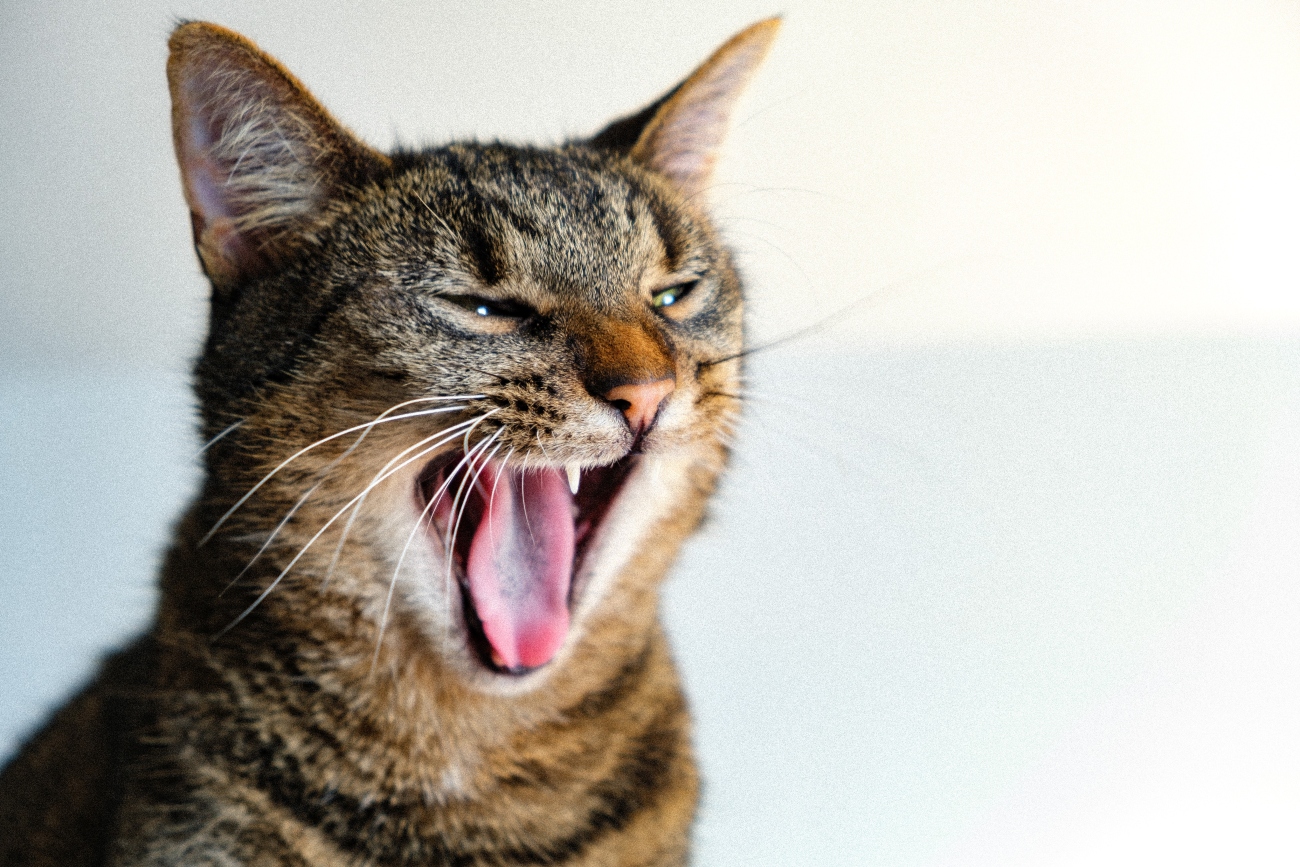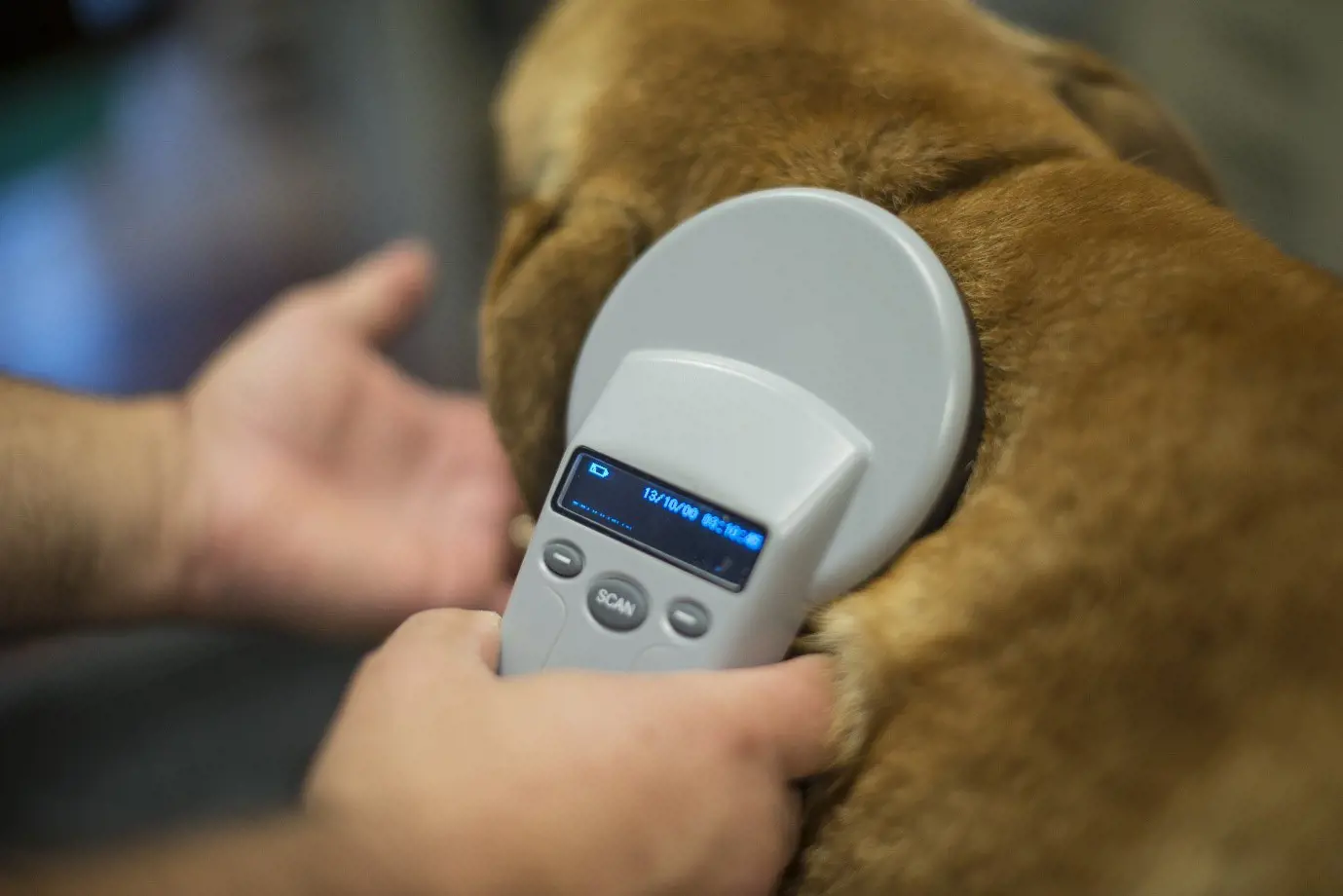How to help a cat with asthma
16th March, 2022

Domestic cats are generally quite hardy creatures and a passing episode of feline asthma may often be ignored as simply coughing on a hairball or piece of food. However, just as with their human owners, asthma can be a serious condition for our much-loved moggies. Read our Purely Pets guide to helping a cat with asthma and get clued up on this potentially fatal condition.
Taking care of even the most low-maintenance of cats can involve a lot of work – from choosing the right breed for your family or what to feed them, to finding the right level of cat insurance you’ll need. Let the team at Purely Pets take some of the strain by arranging your insurance cover today.

What is feline asthma?
The structure and function of the feline respiratory system is very similar to our own. So, in the same way that asthma affects humans, feline asthma is a condition often caused by an allergen or irritant that results in difficulty breathing.
Feline asthma is, in fact, a term used to describe a variety of different conditions affecting the airways of the cat’s lungs. It’s also sometimes called feline chronic small airway disease, feline chronic bronchitis and allergic airway disease. International Cat Care has some useful information on these different conditions that we will refer to as ‘asthma’.
Asthma comes about when a cat’s immune system overreacts to an inhaled allergen or other irritant in the environment. This immune response causes an intense inflammation and swelling within the animal’s airways. As the airways become more constricted and excess mucus is secreted, the cat finds it increasingly difficult to breathe.
Although asthma is incurable, given the right care and medication it’s generally manageable. Indeed many felines with the condition go on to lead happy and active lives.
However, if left untreated or the cat does not respond to treatment, feline asthma can cause life-threatening asthma attacks and can even shorten life expectancy.
Spotting the signs of feline asthma
Feline asthma can often start off very slowly and can easily be missed. Your cat may simply appear to have a mild cough, but over time the airways will become gradually more inflamed, narrow and sensitive.
This can eventually lead to a life-threatening asthma attack. That said, some cats have more or less severe asthma than others.
Common symptoms of asthma in cats worth looking and listening out for include:
- Difficulty breathing or trouble catching their breath.
- Fast or laboured breathing.
- Noisy breathing or a wheezing sound (sometimes more audible after vigorous exercise).
- Gurgling sounds from their throat.
- Keeping their mouth open while breathing.
- Increased swallowing.
- Persistent coughing or hacking (sometimes leading to vomiting).
- Blue lips and gums.
- Becoming lethargic or tired more easily.
Sometimes signs of asthma can seem quite low key over a period of days, weeks or even months, before developing into a full-blown asthma attack.
If an asthma attack happens then you might notice your cat squatting lower to the ground with hunched shoulders. Its neck and head extended out as it struggles to breath and clear its airways. They may gag, cough or breathe rapidly. They may even expel a frothy mucus.
Sometimes people assume their cat is simply hacking up a hairball when in fact it’s a life-threatening situation. Any cat in a full-blown attack should be taken to a vet immediately. Even if your cat is showing just one or two of the early symptoms, you’ll need to speak to a vet straight away.
According to the Blue Cross animal charity, asthma in cats tends to develop between the ages of two and eight years old. It seems that females are slightly more susceptible. While it also seems to be more common in pedigree breeds such as Siamese and Himalayan cats.
Here at Purely Pets, we can help you find the right level of cat insurance, whatever the breed. Getting a quote takes just a few minutes.
Common causes of feline asthma
While the exact cause of asthma in cats is unknown, it seems the primary cause could be the presence of allergens or other irritants in the environment.
Just as in humans, there are allergens and airborne irritants known to trigger asthma in some cats. These include:
Cigarette, candle and fire smoke
Smoke of any description can trigger asthma attacks in some cats. Blue Cross advises owners never to smoke around any pet.
However, cats are particularly vulnerable. Not only can they suffer the effects of second-hand smoke inhalation, but when self-grooming they ingest toxic particles on their fur.
This can lead to the development of certain types of cancer such as blood cancer lymphoma and mouth cancer.
Air fresheners and perfumes
Aerosol sprays or plug-in diffusers can trigger inflammation in the cat’s airways. They may smell nice to us but to the cat they can cause real problems!
Household chemicals
Many modern human homes are filled with products to keep everywhere clean. Unfortunately, many of these can affect a cat with feline asthma.
From toilet cleaner and fabric softener to talcum powder and hairspray, the list goes on and on. But while it can be difficult to eliminate all of these products from your home, there are steps you can take to protect your cat.
Consider using unscented products, and only use household chemicals when your cat is out of the way.
Cat litter particles
Some dusty or scented cat litters have been known to irritate cats. If possible, replace your current litter for one that’s a natural, low-dust version. Cat litter made from old newspaper, wheat or wood could be a better option.
Pollen
As the days start to get warmer and plants begin to flower, pollen can upset cats with feline asthma. If your asthmatic cat loves the outdoors then it can be difficult to protect them.
To reduce the impact of pollen, remove flowering house plants and dry your clothes inside so they can’t collect pollen on the wind. Also look at what plants you have in your home and garden.
Some may even contain toxins that are deadly to your cat. Read this Purely Pets guide to creating a pet-friendly garden and keep your cat safe from harm.
Household dust, mould and mildew
These can be tricky to avoid, particularly if you’re also trying to cut back on household chemicals. Regular dusting, cleaning and hoovering will help your cat by keeping the environment as dust-free as possible. Lots of ventilation and fresh air will also help, provided the pollen count isn’t too high that day.
Certain foods
Just as in humans, asthma can sometimes be brought on by a food allergy. So, speak to your vet about whether their diet could be causing a problem.
There’s lots of advice available on what you should and shouldn’t feed a cat with asthma. But if you think a change of diet could help, then speak to a professional first.
Maintaining a healthy weight while ensuring all nutritional needs are met, is a big part of responsible cat ownership. Based on your cat’s previous medical history and overall physical condition, your vet will be best placed to advise on a suitable diet.

Other conditions that may contribute to asthma symptoms in cats, include:
Parasites
Lungworms are nasty little parasites sometimes picked up by outdoor cats while going about their business. There are two types of lungworms in cats that can both cause significant lung damage. Food experts Purina have an informative article on this.
Extreme stress
Cats can feel stress just like their human friends. And this can lead to breathing issues linked to their current situation or emotional state.
You know your cat best, and every cat has different things that could make them upset. Stay aware of their local environment and any activity around your cat that could potentially be triggering stress-related asthma.
Heart conditions
Hypertrophic cardiomyopathy is the most common heart disease in cats and can leave many suffering from breathing difficulties.
Heart conditions such as congenital defects, valve disease, or heart muscle conditions can cause fluid to build up in the lungs, leading to breathing difficulties.
Lung disease
Problems in the lungs themselves may include things like pneumonia, cancer, fungal disease, or fluid build-up, which can all affect normal breathing.
Obesity
Being overweight is understood to increase a cat’s chances of developing asthma. If your cat has put on weight during lockdown, it’s time to start helping them shed those extra pounds.
When it comes to asthma there’s plenty of debate as to whether indoor or outdoor cats suffer more. Cats who love the outdoors may come into contact with plenty of potential allergens on their journeys around their local area. But if an indoor cat spends too much time in dusty places or around household chemicals, then they may also suffer.
What to do if your cat has an asthma attack
For any loving pet owner seeing your cat having a full-blown asthma attack can be an upsetting experience. As their breathing becomes more difficult, you’ll notice your cat’s sides visibly heaving in and out.
They will probably be unable to do anything else and may start panting, looking frightened and even coughing up mucus. So, what should you do if you find yourself in this situation? In the event of a feline asthma attack, do the following.
- Stay calm. If you get stressed then it could upset them and make matters worse – your cat will already be very frightened.
- Give any medication prescribed by your vet.
- Ensure your cat is in a quiet, cool area with good ventilation.
- If your cat is in distress and seems in the grip of a severe attack, then call for help straight away.
- When taking your cat to the vet’s surgery, ensure your car is well ventilated.
Even if it doesn’t seem to be an emergency or the asthma attack quickly passes, it’s still important to get professional advice as soon as possible.
If you have cat insurance arranged through Purely Pets, then you’ll have access to our 24-Hour Vet Helpline. Our veterinary nurses are on hand to answer any questions you might have about caring for a cat with asthma.
Diagnosing feline asthma
Because there are so many other conditions that can cause breathing difficulties similar to asthma, vets will usually rule these out before making any diagnosis of asthma.
This will involve your vet examining the cat, listening to their chest with a stethoscope and even running blood tests and other procedures. Your vet will want to check for the presence of conditions such as respiratory infections, lungworm and heart disease. The blood tests will also show if there is any inflammation in your cat’s body, which could suggest an allergic response.
Depending on the results of these tests, a chest X-ray may even be needed to look at the condition of the lungs. Your vet will be looking for any abnormalities within the lungs, such as areas of chronic inflammation or unusual fluid accumulation.
However, not all cats with asthma show problems with their lungs on an X-ray. This is particularly the case if they are only in the early stages of the disease.
If these prove inconclusive then your vet might suggest a small camera is used to view inside the lungs. Or perhaps a further test called Bronchoalveolar Lavage (BAL).
This involves taking a sample of the fluids within your cat’s airways and studying it under a microscope. This test can also discover other conditions besides asthma.
Sometimes a vet may advise that the best course of action is to prescribe asthma medication and monitor whether the symptoms clear up. If they do, then it indicates that asthma is the most likely cause.
Treatment for feline asthma
Feline asthma is a progressive disease for which there is no known ‘cure’. However, with early diagnosis and treatment there’s often no reason why your cat can’t go on to lead a perfectly happy and long life.
Effective treatment for feline asthma usually includes the use of medications and the management of those things which trigger asthma attacks. Medications can include the following:
- Drugs such as corticosteroids that combat the inflammation which leads to asthma.
- Bronchodilators, which help to widen the cat’s airways and make breathing easier.
- Antihistamine drugs may sometimes be used when cats haven’t responded to other treatments.
Medication can come in different forms such as tablets or liquids to be administered orally. However, one of the best ways to administer medications for asthma is through an inhaler. This is because it goes directly into the lungs, rather than throughout the body, so there’s less chance of unwanted side effects.
Being asked to use an inhaler with your cat can be a worrying thought. That’s why you always need to seek guidance from your vet so you’re clear on how to use it.
There’s also plenty of advice on the internet on how to teach your cat to accept an inhaler. Watch this helpful video from the PDSA. Be aware that the inhalers you may have used on yourself work differently from those prescribed for cats. If in doubt, always ask for more guidance.
As a lifelong condition, treatment for asthma can become costly over time. So, make sure you have cat insurance in place to cover the costs of medication, regular check-ups and any emergency bills.
A further benefit of cover arranged through Purely Pets is that complementary treatments may also be included depending on your cover level.

How to prevent further feline asthma attacks
While treating your cat with the correct prescribed medicine is the best way to avoid any further asthma attacks, it’s also vital to make changes around the home.
Cats with asthma will have sensitive lungs which react to allergens and irritants in the air. Your vet might also be able to conduct allergy testing to find out the root cause of the condition and help you eradicate any potential asthma triggers.
Anything you can do to reduce these triggers will help. For example, you’ll want to keep your household smoke-free, vacuum regularly, and reduce the use of chemicals and sprays around the home.
You might also consider ways to reduce stress in the home and to ensure your cat has a healthy diet to reduce the chance of obesity. If your vet recommends a special diet then cat insurance can also help with the costs of that, too.
If your cat suffers another asthma attack, even if they seem fine, it’s important to speak to a veterinary professional immediately.
Having adequate cat insurance in place means you can be confident in getting help rather than leaving it until it’s too late. Don’t let financial concerns get in the way of effective treatment for your loyal pet.
Get a cat insurance quote with Purely Pets
Asthma is just one of the many challenges that comes with owning a cat. But arranging the most appropriate insurance cover for your pet will help you meet these challenges.
Our helpful team of insurance professionals are dedicated to securing you the right cover for your budget and your cat’s particular needs.
Whatever the problem you encounter, if you’ve taken out one of our 5* Defaqto rated cat insurance products you’ll be sure to get the help you need. You’ll get cover for vet fees from £1,000 to £15,000 per year. And you can even choose an excess level starting from just £60.
With 15 levels of lifetime cover on offer, we give you the freedom to decide what’s right for you and your feline.
And it’s not just vet fees that we can help with. Added benefits such as cover for dentistry, loss of pet, third party liability and overseas travel can also be included. Plus we’ve made it easy to manage your policy online, at a time that suits you.
Get a quick quote for cat insurance from Purely Pets today.
Helpful Pages
Recent Posts
Pet Insurance Quote
- 98% claims paid *
- Claims paid directly to vets
- 24/7 vet video consultations
- Interest free monthly payments




